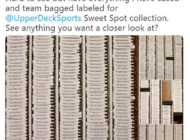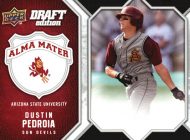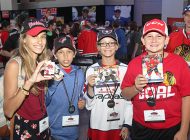In 1984, Doc Gooden was called up to the Mets’ big league team, and quickly established himself as a dominant pitcher. At age 19, he led the National League in WHIP and strikeouts, a remarkable feat. He followed this at age 20 with a 1985 season that is almost too stunning to believe: a 24-4 record, sixteen complete games, 276.2 innings pitched, 268 strikeouts, with a 1.53 ERA, and a 0.965 WHIP. Wow.

Doc would continue to be a very good pitcher, but age 20 was the peak of his career. He actually had 16 years in the majors, with his potential for greatness admittedly stifled by drug use.
And while his story serves as an example of what bad decisions can do to a career, they also lay out a bit of a blueprint as it relates to young pitchers in general:
1. Pitchers like Doc Gooden who come up at a young age and dominate out the gate are an absolute exception.
2. Even if they can accomplish this from the very start of their careers, sustained, consistent dominance at this level is incredibly rare. Even Doc couldn’t do it.
Which brings us to Phil Hughes. Long touted as the gem of the Yankees farm system, the fact that Brian Cashman never moved Hughes for an established veteran (despite many opportunities to do so) signaled a change in the philosophy of the organization, perhaps more than any other single example. And Hughes kept rolling along, dominating at every level he pitched. Sub 2.00 ERAs were the norm for him in A ball, and at AA, he continued to blow away the competition with a a 2.25 ERA and 0.91 WHIP in 116 innings. All at the age of 20. The expectations of Yankees fans went sky high, as they looked forward to the day that this kid would bring that talent to the Bronx and continue his domination.
That moment came 2007 at age 21, and he had a 4.46 ERA in 72.2 innings. Those who expected Hughes to come out and produce the same results from the start (especially considering the hype) were highly disappointed. Of course, the numbers he put up in his first season were more than adequate for a player of his age in the AL East, but most Yankees fans couldn’t help but feel a bit let down.
Regardless, expectations were high in 2008, when the Yankees trusted Hughes and Ian Kennedy with spots in the rotation. The results just weren’t there, and Hughes was sent back down to the minors before April was over. Once the prized jewel of the Yankees system, Hughes garnered far less attention after “failing” in his rotation spot. It took until September for Hughes to come back up to the Yankees, where he finally showed more ability, including a great game against the Blue Jays where he went eight innings, giving up only two runs.
And yesterday, after Wang’s horrible start to the season provided an opportunity, Hughes came up and pitched six scoreless innings. To many fans, it probably seems like he’s “finally” reaching his potential. At age 23.

The moral of the story here is that no matter how highly touted a prospect is, patience is a virtue. Especially with a pitcher. Hardly anyone has the ability to come up and replicate their minor league success from day one, much less sustain it. As fans, it helps for us to keep this in mind, especially when the hype is so huge. Hughes’ story is still far from over of course, but if he does falter again, it’ll help to remember history.
In Part 2, we’ll look at other young pitchers in similar situations as Hughes: high expectations, coupled with signs of success and some faltering. Joba Chamberlain, Hughes’ counterpart in Yankee pitching prospect hype, definitely fits into this category. So do “King” Felix Hernandez, Zack Greinke, and no-hitter-turned 6.75 ERA and demotion in Clay Buchholz.
What other current pitchers fit this mold of “Incredible young talent who didn’t meet expectations out the gate, but will get there?” Post a suggestion in the comments section, and I may include your choice in Part 2.

















2 Comments
[…] Following up on yesterday’s post, let’s take a look at some current pitchers who had similar hype to Hughes, their history, and current outlook. […]
[…] aware that much of the copy above contradicts my previous posts on how fans need to be more patient with their pitching prospects, but I’m sorry. I just […]